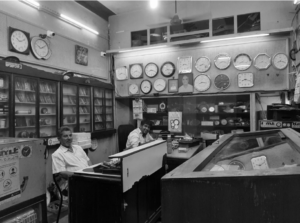பூதக்கோள் வியாழன் பனிநிலவுக்கு ஈரோப்பிய விண்சிமிழ் ஏவப்பட்டுள்ளது

An Ariane rocket carrying the robotic explorer JUICE takes off from Europe’s spaceport in French Guiana. The European spacecraft has blasted off on a quest to explore Jupiter and three of its ice-encrusted moons. The robotic explorer set off on an eight-year journey Friday. (European Space Agency/The Associated Press)
சி. ஜெயபாரதன் B.E.(Hons) P.Eng (Nuclear) கனடா
2023 ஏப்ரல் 14 ஆம் தேதி ஈரோப்பியன் விண்வெளி ஆணையகம் [ESA] பூதக்கோள் வியாழன் நோக்கி ஏகி அதன் பனிநிலவு இரண்டை, ஈரோப்பா, கணிமீடு, உளவு செய்ய அனுப்பியுள்ளது. அந்த இரண்டு துணைக்கோள்தான் உயிரின மூலவிகள் இருப்பதற்கு வாய்ப்புகள் உள்ளன என்று தேர்வு செய்யப் பட்டவை. ஈசாவின் பூதக்கோள் வியாழன் விண்வெளித் திட்டம் “சூஸ்’ [JUICE] [JUpiter ICy moons Exploration] என்று குறிப்பிடப் படுகிறது. சூரிய மண்டலத்தில் நமது பூமிக்கு அப்பால் அவ்விரண்டு நிலவுகளில் தான் உயிரின மூலவிகள் இருக்கக்கூடும் என்று கூறப்படுகிறது. ஈசாவின் சூஸ் விண்சிமிழ் 6.6 பில்லியன் மைல்கள் கடந்து 8 ஆண்டுகள் பயணம் செய்து வியாழக் கோளை நெருங்கும் என்று எதிர்பார்க்கப் படுகிறது.
Jupiter, with its prominent Great Red Spot, hangs in space with Ganymede. (NASA/ESA and E. Karkoschka/Reuters)
JUICE is taking a long, roundabout route to Jupiter, covering 6.6 billion kilometres.
It will swoop within 200 kilometres of Callisto and 400 kilometres of Europa and Ganymede, completing 35 flybys while circling Jupiter. Then it will hit the brakes to orbit Ganymede, the primary target of the 1.6 billion-euro mission ($2.4 billion Cdn).
Ganymede is not only the solar system’s largest moon — it surpasses Mercury — but has its own magnetic field with dazzling auroras at the poles.
https://www.nasa.gov/mission_pages/juno/images/index.html
https://youtu.be/paeuMCN-DdQ
https://youtu.be/NGQF-Hf5h7Y
https://youtu.be/NrkF5beDh10












சேர்க்கை
பூதக்கோள் வியாழன் பனிநிலவுக்கு ஈரோப்பிய விண்சிமிழ் ஏவப்பட்டுள்ளது
NEW INFORMATION
https://www.spaceze.com/news/esa-s-juice-is-on-its-way-to-visit-jupiter-s-moons
Universe Today
SpaceZE News Publisher
Monday, 17 April 2023
A new era of exploration at Jupiter’s moons began last week with the launch of the European Space Agency’s Juice, the Jupiter Icy Moons Explorer. This mission will visit three of Jupiter’s largest moons — Europa, Callisto and Ganymede — to investigate whether they could be potentially habitable, a question that’s been highly debated since the first evidence of subsurface oceans on these moons was seen by the Galileo mission in the 1990s.
The spacecraft launched onboard an Ariane 5 rocket from the European Spaceport in French Guiana on April 14th, 2023. After about 2 hours into the flight, ESA operations confirmed that it unfurled its gigantic 27-meter-(88 ft.) long solar arrays, meaning the launch was successful. Now comes the long flight to Jupiter. Juice will arrive at the planet in 2031, where after the flybys of Europa, and Callisto, the spacecraft will eventually settle into a final orbit around Ganymede.
“ESA, with its international partners, is on its way to Jupiter,” says ESA Director General Josef Aschbacher, in a press release. “Juice’s spectacular launch carries with it the vision and ambition of those who conceived the mission decades ago, the skill and passion of everyone who has built this incredible machine, the drive of our flight operations team, and the curiosity of the global science community. Together, we will keep pushing the boundaries of science and exploration in order to answer humankind’s biggest questions.”
The volume of subsurface water held by Europa, Ganymede and Callisto is far greater than in Earth’s oceans. Juice’s suite of science instruments will provide unprecedented, close-up details to help uncover the mysteries of these enticing moons.
The timing for Juice’s launch was very precise. The launch window was about one second so that the orbital mechanics could allow for the spacecraft’s complex trajectory. The eight-year cruise includes four gravity-assist flybys of Earth and Venus, which will slingshot the spacecraft towards the outer Solar System. The first flyby of Earth comes in August 2024 and will be the first time a spacecraft will perform a maneuver called a Lunar-Earth gravity assist (LEGA), which involves flying first past the Moon and then past Earth just a day and a half later.
Juice’s journey to Jupiter. Credit: ESA
Everything about Juice is big. At 4,800 kilograms (10,600 pounds), Juice is one of the heaviest spacecraft ever launched. The complex trajectories also means Juice needed to carry extra fuel, almost 3,000 kilograms (roughly 6,600 pounds) of propellant in total. Over the next two-and-half weeks Juice will deploy its various antennas and instrument booms, including the 16 meter (55 ft)- long radar antenna, 10.6 meter (35 ft)- long magnetometer boom.
Ten state-of-the-art instruments will study the environment of Jupiter and the subsurface of the icy moons. The instruments include radar that can penetrate the surfaces of the icy moons as deep as nine kilometers (six miles), showing us their internal structures for the first time. A visible-and-infrared spectrometer will be able to detect what the surfaces of the icy moons are made of. Two radio instruments will allow scientists to infer the gravity fields of the moons, providing insights into their interiors. And a magnetometer will in particular be focused on Ganymede, as it is the only moon in our Solar System with its own magnetic field.
And if you’re wondering if the name of the spacecraft is Juice or JUICE, ESA decided to simplify the original complicated acronym for JUpiter ICy moons Explorer to just Juice, the Jupiter Icy Moons Explorer.
**********************